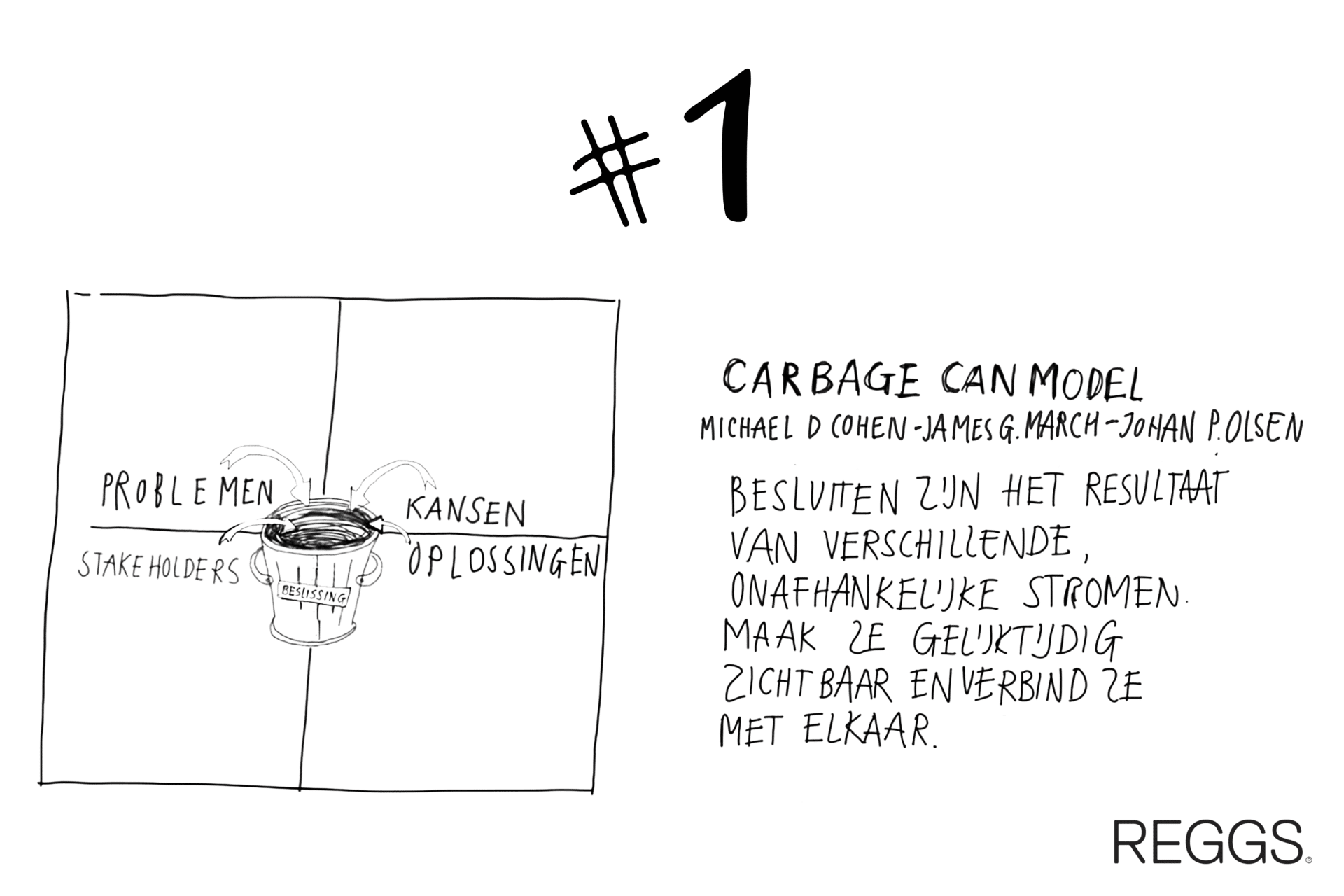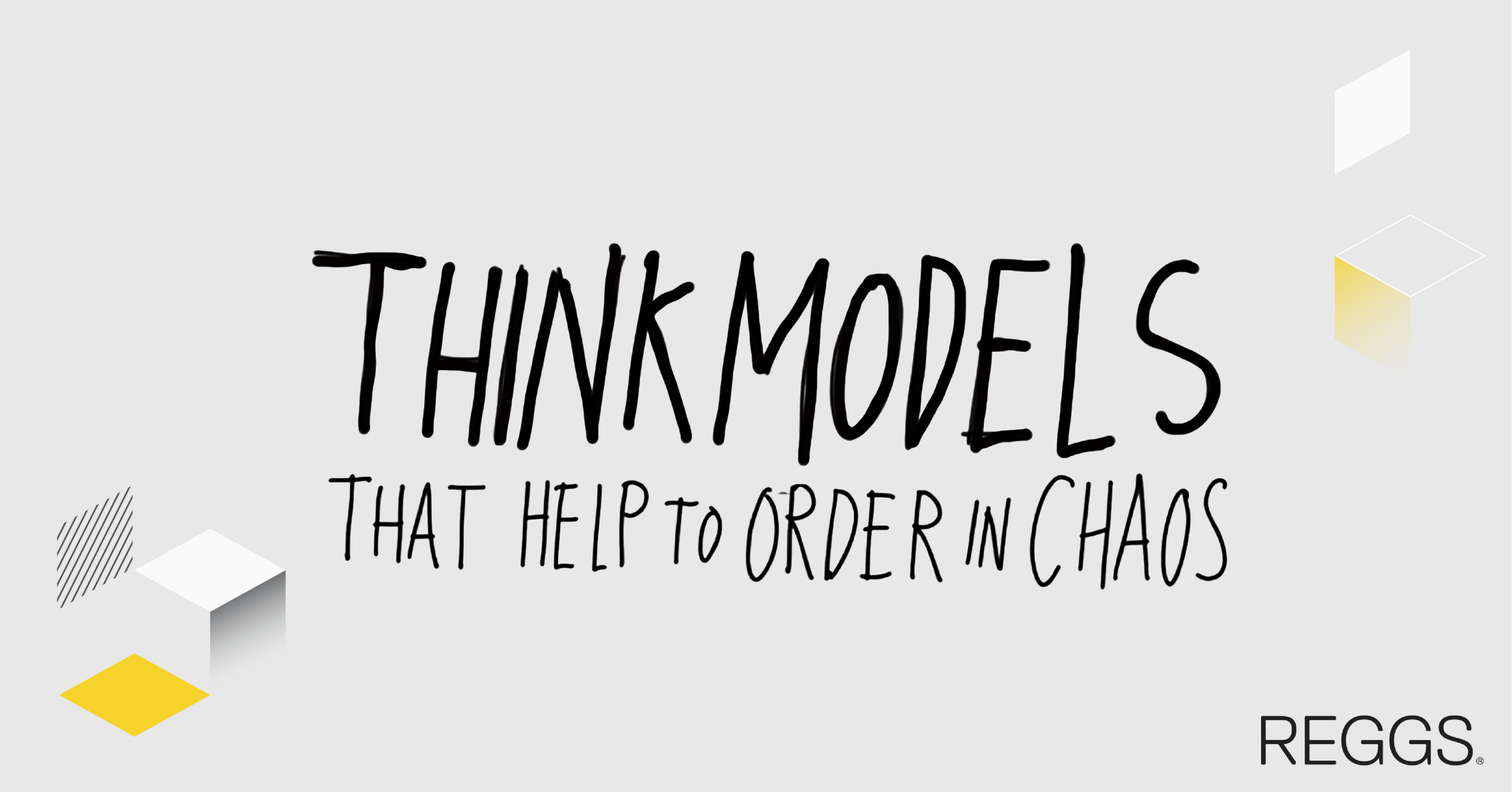In times of crisis, creativity is desperately needed, sometimes even vital! Your brain is forced to look at things differently, you look for alternatives and take more risks. Many entrepreneurs and employees are being asked for creativity and flexibility to keep their business running. The most important thing to do is to open your brain and dare to look at things a little differently. In these blogs we share tips and tricks to stay creative and resilient at home!
With these three tools you place all information in perspective, create structure and prioritize. When you have organized peace and structure in your thoughts you have a better basis for creativity, for example in a brainstorm.
3 effective thinking models
1. Toss: Garbage Can Model
The Garbage Can Model is different from other models of decision-making because it abandons the linear linkage from problem to solution. By independently throwing these "streams" into the Garbage Can (the final decision), problems, solutions, stakeholders and opportunities can be juxtaposed and connected. This way, you don't think in problems or solutions, but give yourself the opportunity to flip everything once.

2. Distinguish between urgent and important: Prioritize with the Eisenhower model.
"Urgent matters are rarely important. Important matters are rarely urgent." A famous exclamation from General Dwight Eisenhower before he became U.S. president.
This is how you get started:
Any task, thought or idea that comes to mind can be prioritized (or not) by asking two questions:
- Can this task wait or should it be done as soon as possible (today)?
- Is it hugely important and necessary to do it yourself or is it not important and necessary to do it yourself?
In the chart you can then see your outcome:
- Urgent and important: Do it right today!
- Urgent and not important: Delegate it! It is not necessary to pick it up yourself.
- Not urgent, but important: Schedule it later so you don't forget and then pick it up yourself.
- Not important and not urgent: Cross it off your list. This task or idea is not needed for now.

3. Dare to make mistakes and put your senses to the best use: Low hanging fruit can be picked right away.
Even without a model, you can create order in a chaos of information. It is always important to tell yourself that it is okay to make mistakes. There is often a lot of good in your "mistakes," so try to evaluate them and see why they did not produce the desired result. Perhaps that gem of an idea is right there!
Really listen and think, try to put yourself in another person's shoes and try to zoom out as much as possible. This will give you a better picture of a situation and ultimately better solutions. Try to look at what you don't yet see, what do you not yet know? Where can you still go as a brand? What if... This is where your brain is not yet filling in your idea with habits and recognition. Good luck!



